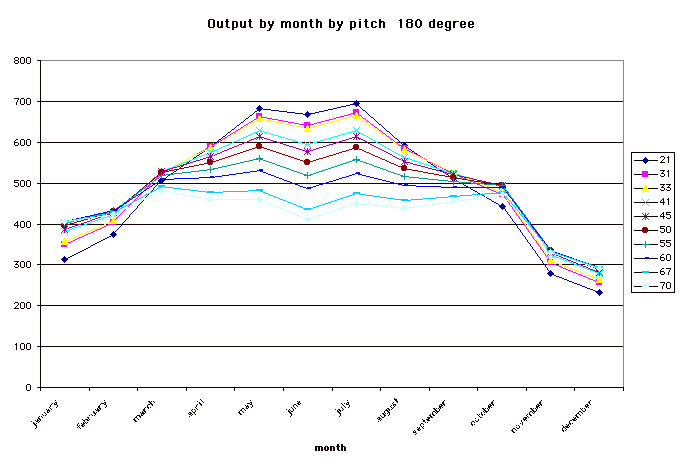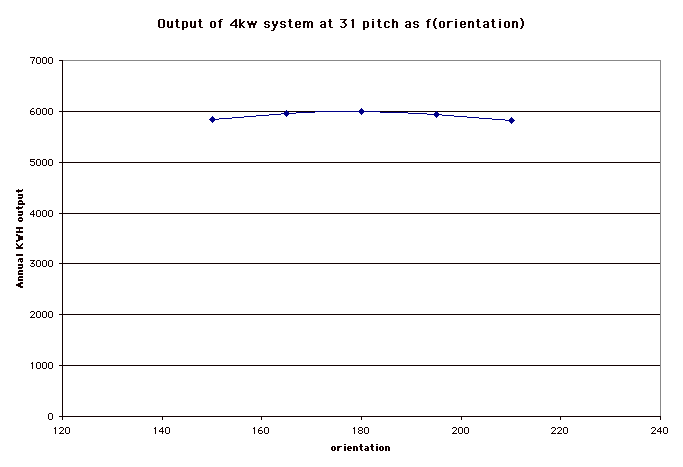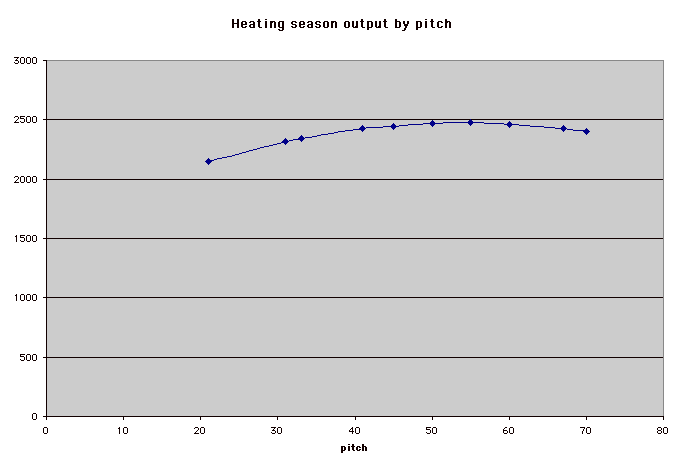
Variations in monthly output as a function of pitch with an orientation of 180 degrees show a large monthly variation that interacts with pitch. The optimal pitch varies by month (and therefore season) and is flatter in the summer and steeper in the winter.

Taking total output across the year, it turns out that 31-33 degrees is about optimal. That is, latitude - 10 degrees. Note that roof pitches between 20-50 degrees produce practically the same amount of energy.
 .
.
The optimal orientation of a roof is facing south, but there is a fair amount of play in this so that being off 20 degrees is not too serious.
 .
.
Although I can not find heating calculators equivalent to the PV calculators, since both depend upon the same energy source (the sun) the calculations should differ only by a scaling factor (the relative efficiency of PV versus heating). The primary difference is that while a grid connected PV roof should be pitched to maximize annual output, a solar heating system should be pitched to maximize output in the heating season (roughly October - March in Evanston). Taking the monthly data as a function of pitch and summing across the six months of the heating season leads to the optimal pitch about 50-55 degrees.
 .
.